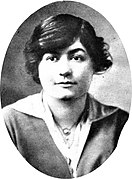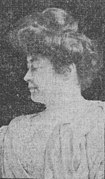Related Research Articles

Janet Clara Malcolm was an American writer, journalist on staff at The New Yorker magazine, and collagist. She was the author of Psychoanalysis: The Impossible Profession (1981), In the Freud Archives (1984), and The Journalist and the Murderer (1990), among other books. She wrote frequently about psychoanalysis as well as the relationship of the journalist to subject and was known for her prose style as well as polarizing criticism of her own profession, though her most contentious work, The Journalist and the Murderer, became a mainstay of journalism-school curricula.
Maurine Dallas Watkins was an American playwright and screenwriter. Early in her career, she briefly worked as a journalist covering the courthouse beat for the Chicago Tribune. This experience gave her the material for her most famous piece of work, the stage play, Chicago (1926), which was eventually adapted into the 1975 Broadway musical of the same name, which was then made into a successful movie in 2002 that won six Academy Awards, including Best Picture.
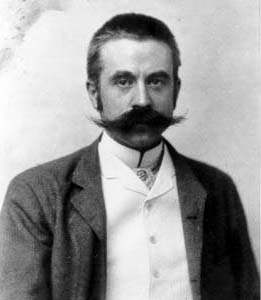
Stanford White was an American architect. He was also a partner in the architectural firm McKim, Mead & White, one of the most significant Beaux-Arts firms. He designed many houses for the rich, in addition to numerous civic, institutional, and religious buildings. His temporary Washington Square Arch was so popular that he was commissioned to design a permanent one. His design principles embodied the "American Renaissance".
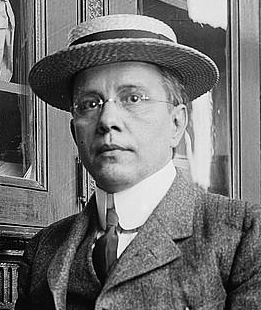
Harry Kendall Thaw was the son of coal and railroad baron William Thaw Sr. of Pittsburgh, Pennsylvania, United States. Heir to a multimillion-dollar fortune, the younger Thaw is most notable for shooting and killing the renowned architect Stanford White on June 25, 1906, on the rooftop of New York City's Madison Square Garden in front of hundreds of witnesses.
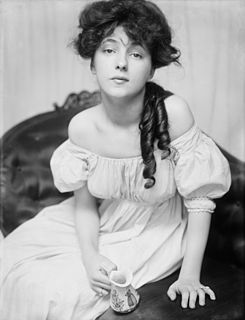
Evelyn Nesbit was an American artists' model, chorus girl, and actress. She is best known for her years as a young woman in New York City, particularly her involvement in a deadly and abusive triangle between railroad scion Harry Kendall Thaw and architect Stanford White, which resulted in White's murder by Thaw in 1906.

Dorothy Mae Kilgallen was an American columnist, journalist, and television game show panelist. After spending two semesters at the College of New Rochelle, she started her career shortly before her 18th birthday as a reporter for the Hearst Corporation's New York Evening Journal. In 1938, she began her newspaper column "The Voice of Broadway", which was eventually syndicated to more than 140 papers. In 1950, she became a regular panelist on the television game show What's My Line?, continuing in the role until her death.
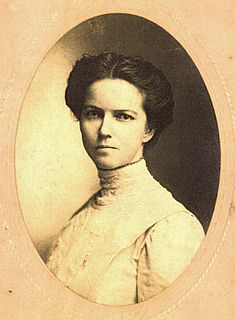
Elizabeth Meriwether Gilmer, widely known by the pen name Dorothy Dix, was an American journalist and columnist. As the forerunner of today's popular advice columnists, Dix was America's highest paid and most widely read female journalist at the time of her death. Her advice on marriage was syndicated in newspapers around the world. With an estimated audience of 60 million readers, she became a popular and recognized figure on her travels abroad. In addition to her journalistic work, she joined in the campaign for woman suffrage and the ratification of the Nineteenth Amendment to the U.S. Constitution.
Penny press newspapers were cheap, tabloid-style newspapers mass-produced in the United States from the 1830s onwards. Mass production of inexpensive newspapers became possible following the shift from hand-crafted to steam-powered printing. Famous for costing one cent while other newspapers cost around six cents, penny press papers were revolutionary in making the news accessible to middle class citizens for a reasonable price.

Winifred Sweet Black Bonfils was an American reporter and columnist, under the pen name Annie Laurie, a reference to her mother's favorite lullaby. She also wrote under the name Winifred Black.

Women in journalism are individuals who participate in journalism. As journalism became a profession, women were restricted by custom from access to journalism occupations, and faced significant discrimination within the profession. Nevertheless, women operated as editors, reporters, sports analysts and journalists even before the 1890s in some countries as far back as the 18th-century.

In journalism, the society page of a newspaper is largely or entirely devoted to the social and cultural events and gossip of the location covered. Other features that frequently appear on the society page are a calendar of charity events and pictures of locally, nationally and internationally famous people. Society pages expanded to become women's page sections.

The Girl in the Red Velvet Swing is a 1955 American film directed by Richard Fleischer from a screenplay by Walter Reisch and Charles Brackett, and starring Joan Collins, Ray Milland, and Farley Granger. The CinemaScope film was released by Twentieth Century-Fox, which had originally planned to put Marilyn Monroe in the title role, and then suspended her when she refused to do the film.

Ada Patterson was an American print journalist.

Pauline Frederick was an American journalist in newspapers, radio and television, as well as co-author of a book in 1941 and sole author of a book in 1967. in her nearly 50-year career, she covered numerous stories ranging from politics and articles of particular interest to women to military conflicts, and public interest pieces. Her career extended from the 1930s until 1981; she is considered one of the pioneering women in journalism.

Susan E. Dickinson was an American journalist and the older sister of lecturer Anna Elizabeth Dickinson.
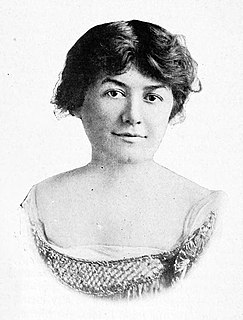
Nixola Greeley-Smith was an American journalist. She worked at Joseph Pulitzer's papers and developed a distinctive style to her human interest stories and interviews. She covered home front activities during World War I and was an advocate for women's suffrage. She was known for securing interviews with people of high status and for her unflinching questions and willingness to address controversial subjects. Mary Heaton Vorse said, "I pity the unwary who are interviewed by Nixola Greeley-Smith."

The women's page of a newspaper was a section devoted to covering news assumed to be of interest to women. Women's pages started out in the 19th century as society pages and eventually morphed into features sections in the 1970s. Although denigrated during much of that period, they had a significant impact on journalism and in their communities.

17th Suspect is the seventeenth novel in the Women's Murder Club novel series by James Patterson and Maxine Paetro.
Ione Marie Quinby Griggs (1891-1991) was a crime journalist for the Chicago Evening Post and subsequently wrote an iconic advice column for the Milwaukee Journal Green Sheet for over fifty years.
A stunt girl was a woman investigative journalist in the late 19th and early 20th centuries in the United States. The term was often used derogatorily.
References
- ↑ Daly, Christopher (2012). Covering America : a narrative history of a nation's journalism. Amherst: University of Massachusetts Press. p. 126. ISBN 978-1-55849-911-9. OCLC 793012714.
- 1 2 3 4 5 6 7 8 9 10 11 Lutes, Jean (2006). Front page girls : women journalists in American culture and fiction, 1880-1930. Ithaca, N.Y: Cornell University Press. pp. 65–93. ISBN 978-0-8014-7412-5. OCLC 68221217.
- 1 2 3 4 5 6 7 8 9 Gudelunas, D. (2017). Confidential to America: Newspaper Advice Columns and Sexual Education. Taylor & Francis. pp. 31–35, 62. ISBN 978-1-351-29850-6 . Retrieved 2020-12-13.
- 1 2 3 4 5 Abramson, P.L. (1990). Sob Sister Journalism. Contributions to the study of mass media and communications. Greenwood Press. ISBN 978-0-313-26513-6 . Retrieved 2020-12-13.
- ↑ Muhlmann, G.; Birrell, J. (2008). Political History of Journalism. Wiley. p. 63. ISBN 978-0-7456-3574-3 . Retrieved 2020-12-19.
- ↑ Wilkes, Roger (2002). Scandal : a scurrilous history of gossip. London: Atlantic. pp. 189, 197. ISBN 1-903809-63-0. OCLC 50434290.


